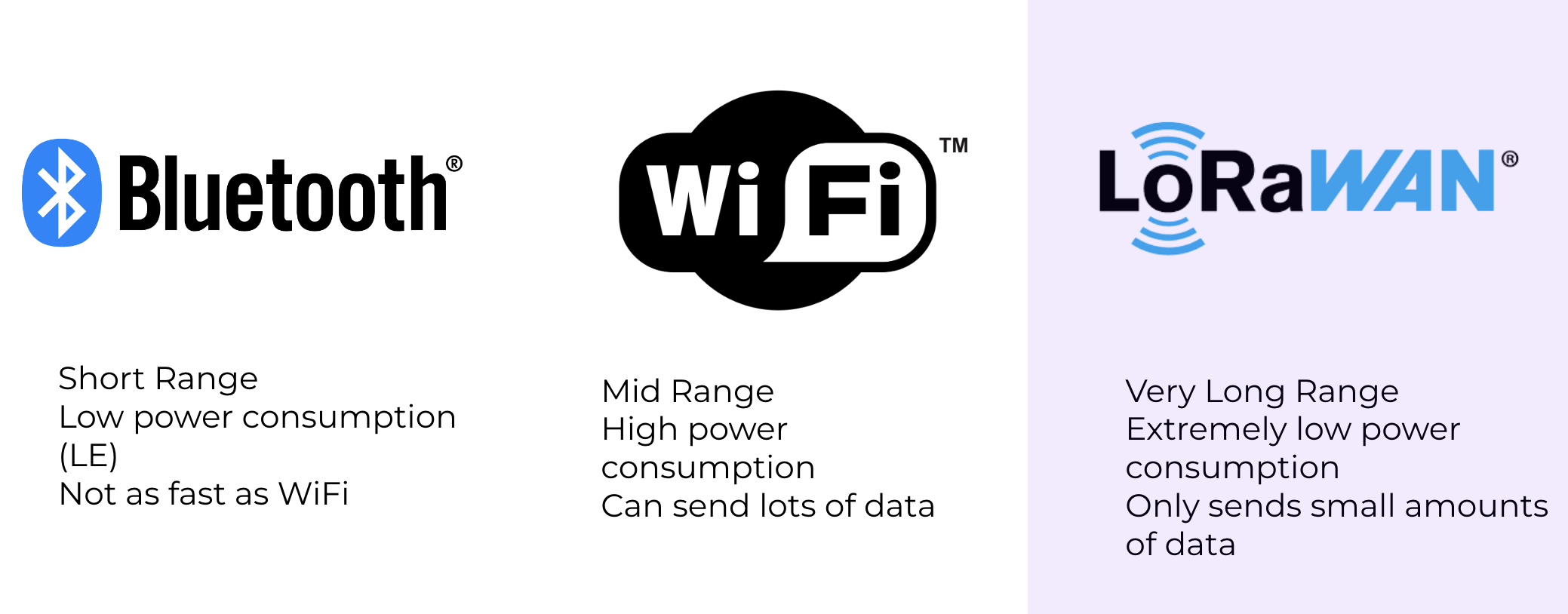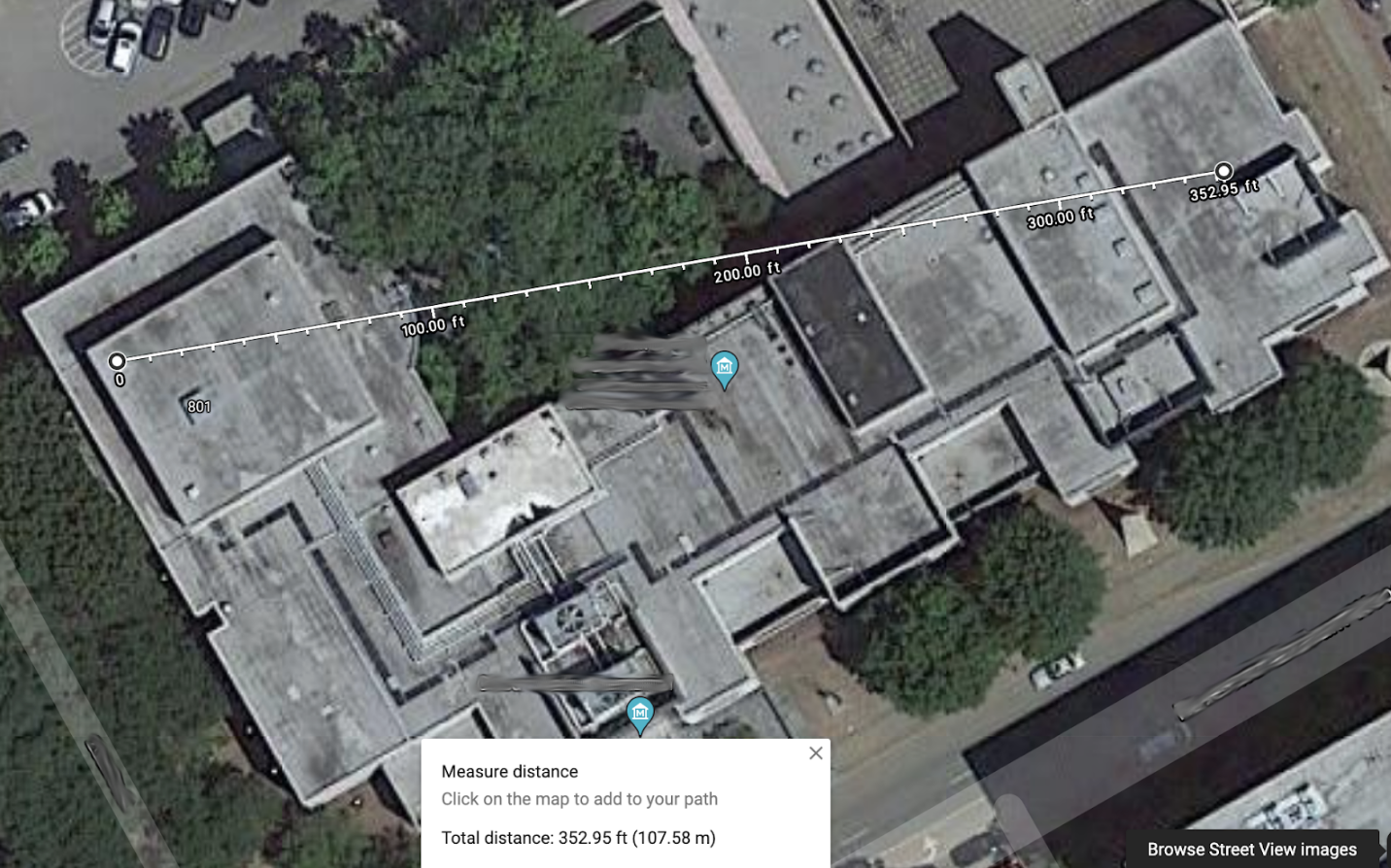Gateway Range
Understand gateway range and signal.
Table of Contents
Introduction
Conserv gateways need two types of connection to work well for the sensors to report to the Cloud. This is important to understand if you later need to troubleshoot gateway connectivity issues.
- First, your gateway needs to connect to the internet.
- Second, your gateway needs to connect to your sensors.
From your Gateway to the Internet
Conserv provides two options for the gateway to connect to the internet.
Ethernet
This is the recommended method as it is the most reliable. All Conserv gateways come with an included standard Ethernet cable. Customers with IT and security requirements should consult with their IT department for permission before plugging in the gateway to the local Ethernet network. Active firewalls will stop the gateway from connecting to the internet, so this method will not just work in protected networks until IT has updated permissions.
Note
Some firewalls can block all gateway traffic. A gateway that works well with cellular data may stop working if the Ethernet cable is plugged into a protected network.
Cellular Data
All Conserv gateways come with a global SIM card inside. This SIM card will provide the gateway with internet where Ethernet is not available or allowed. SIM card connectivity is only as good as the cellular signal at a particular location.
Customers relying on cellular data will need to make sure they place their gateway in an area with good cellular connectivity. Occasionally, cellular data networks may experience down time and cause momentary connectivity loss. Conserv does not own or control these networks and recommends that customers rely on Ethernet wherever possible.
For a gateway connected using Cellular Data, the information that opens on the right when the gateway card is clicked will show Connectivity information like this:

Radio interface: In this screenshot, the gateway is connected to the 4G LTE network for data transmission.
Signal strength: This is the received signal power from the cell tower. A value between -50 and -70 dBm is considered strong. The closer this number is to zero (but still negative), the better the signal.
RSRQ: Reference Signal Received Quality reflects the quality of the LTE signal. Values between -3 dB (excellent) and -20 dB (poor) are typical.
Important Note
The Conserv gateway is not using any WiFi networks at any point to connect to the internet. Your WiFi connectivity is not relevant to your gateway connection. Placing the gateway in an area with good (or bad) WiFi signal will not make a difference.
From your Gateway to your Sensors
Understand WiFi, Bluetooth and LoRaWAN
Wireless monitoring poses various challenges, with range being one of the most significant. Conserv uses Long Range Wide Area Network (LoRaWAN) technology, which offers best-in-class range, transmitting signals that are much farther than WiFi or Bluetooth.

Maximum range varies widely depending on the environment, but you can gauge it by observing devices that you already own.
| Device | Average | Notes |
| Bluetooth headphones | 10-20 feet | Some higher power versions can reach up to 100 feet or more without obstructions. |
| WiFi | A few hundred feet | Dead zones inside buildings require range extenders or mesh networks. |
| LoRaWAN |
Outdoors without obstructions: several miles. Indoors: several hundred feet |
Indoors, a single gateway can typically cover tens of thousands of square feet, even through concrete ceilings and floors. |
Conserv regularly observes sensors operating reliably hundreds of yards from the gateway, with one example showing a sensor over 100 yards away across multiple floors of a building.

Reasons for the Superior Range
Both WiFi and Bluetooth operate in the 2.4GHz or 5.725GHz frequency ranges, which can carry a lot of data but over limited distances due to permitted power levels. In contrast, LoRaWAN uses a lower frequency unlicensed ISM (Industrial, Scientific, Medical) band (0.902-0.928GHz).
This lower frequency travels farther and penetrates obstructions better than the higher frequencies that are used by WiFi and Bluetooth.
Additionally, the LoRaWAN frequency is less crowded, making it easier to obtain a clear signal.
LoRaWAN is specifically designed for range; while it cannot transmit large amounts of data (such as streaming Netflix), it excels at reliably sending small bits of data (like sensor readings) over long distances while consuming minimal power.
Important Note
The Conserv gateway is not using WiFi to connect to Conserv sensors. WiFi in a space will not improve gateway-to-sensor connectivity.